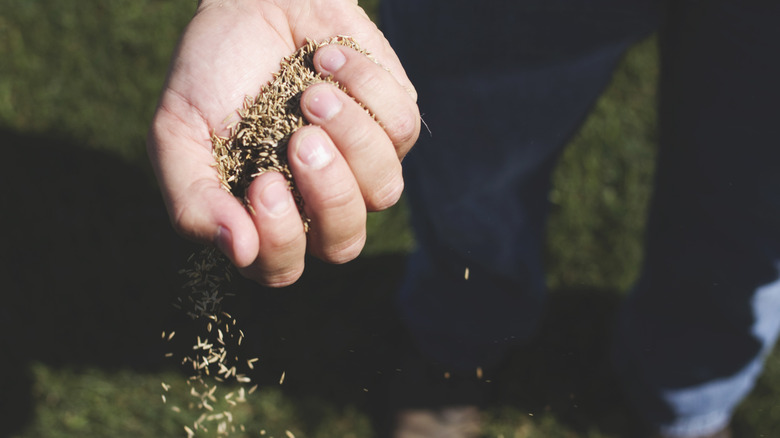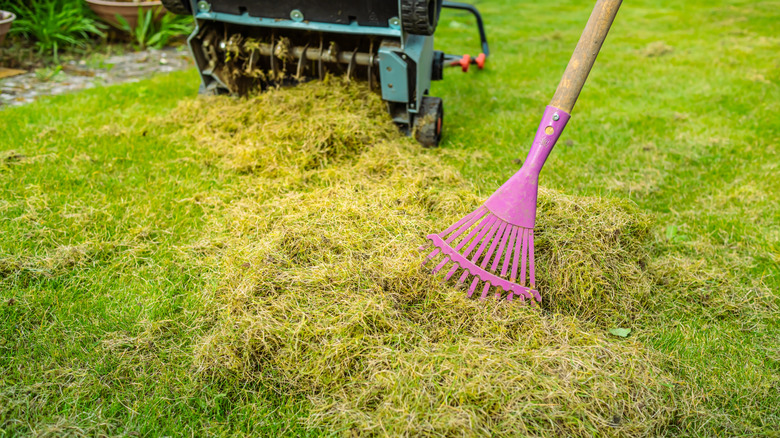The Biggest Mistakes Everyone Makes When Planting Grass Seed
There's nothing quite like a sprawling lawn of lush, green grass. But over time, your lawn can develop bare patches or completely die off in certain areas. Planting grass seed helps fill in these areas so you can restore your lawn to its former glory. However, there are several common mistakes you can make when planting grass seed that can sabotage your efforts.
Without proper soil preparation, the grass seed won't germinate properly. Before planting grass seed, you need to understand how to properly get your soil ready so the seeds have the best chance at growing big and strong. Planting the wrong seeds at the wrong time can also have devastating effects as you wait patiently for grass that is unable to grow in your climate.
But there's hope. You can grow grass seed fast to create a lush lawn in no time as long as you avoid these and other grass-planting mistakes.
Biggest soil preparation mistakes
One of the biggest tips and tricks for growing grass from seed is proper soil preparation. Skipping this step can prevent the seeds from reaching the soil, which means they'll just sit on the surface instead of germinating. To prepare the soil for seeding, rake or aerate the area and remove dead grass and other debris.
A soil test is also an essential part of preparation. It will tell you the pH and nutrient levels of your soil so you know how to amend it for the seeds to grow well. Without this information, you're more likely to make a related mistake: using lime when you don't need to. Lime helps raise the soil's pH level, but it can increase the level too much if your soil doesn't need it.
Finally, applying too much topsoil over the grass seed or planting the seeds too deep in the soil can prevent your seeds from germinating. The best way to prepare for overseeding a lawn is to cut the grass as short as possible and remove clippings and thatch before scattering the seeds. If you make the mistake of skipping this step, you might as well throw the grass seeds directly in the trash.
Biggest grass seed mistakes
Failure to prepare your soil isn't the only way to sabotage your new lawn. If you use the wrong type of grass seed for your climate, it won't germinate. If you live in a northern climate, stick with cool-season grasses like ryegrass or and bluegrass. Those in a warm climate should choose grasses like Bermuda or Bahia, which are among the best grasses to handle extreme heat. And if you live in a region with four seasons, opt for Bermuda, fescue, or zoysia grass seeds.
Even if you buy the right grass seed the first time, it won't grow if you don't seed your lawn properly. Follow the directions on the bag regarding the recommended application rate for the seeds. Apply seeds in the late summer, early fall, or early spring for best results; planting them at the wrong time prevents the grass from developing a strong and healthy root system.
Once you've planted the seeds, water the lawn daily or as needed for at least a couple of weeks to keep it moist while the seeds begin to germinate and sprout. Avoid raking or mowing until the grass is established, and skip the weed control products to avoid accidentally killing the grass as well as weeds.


